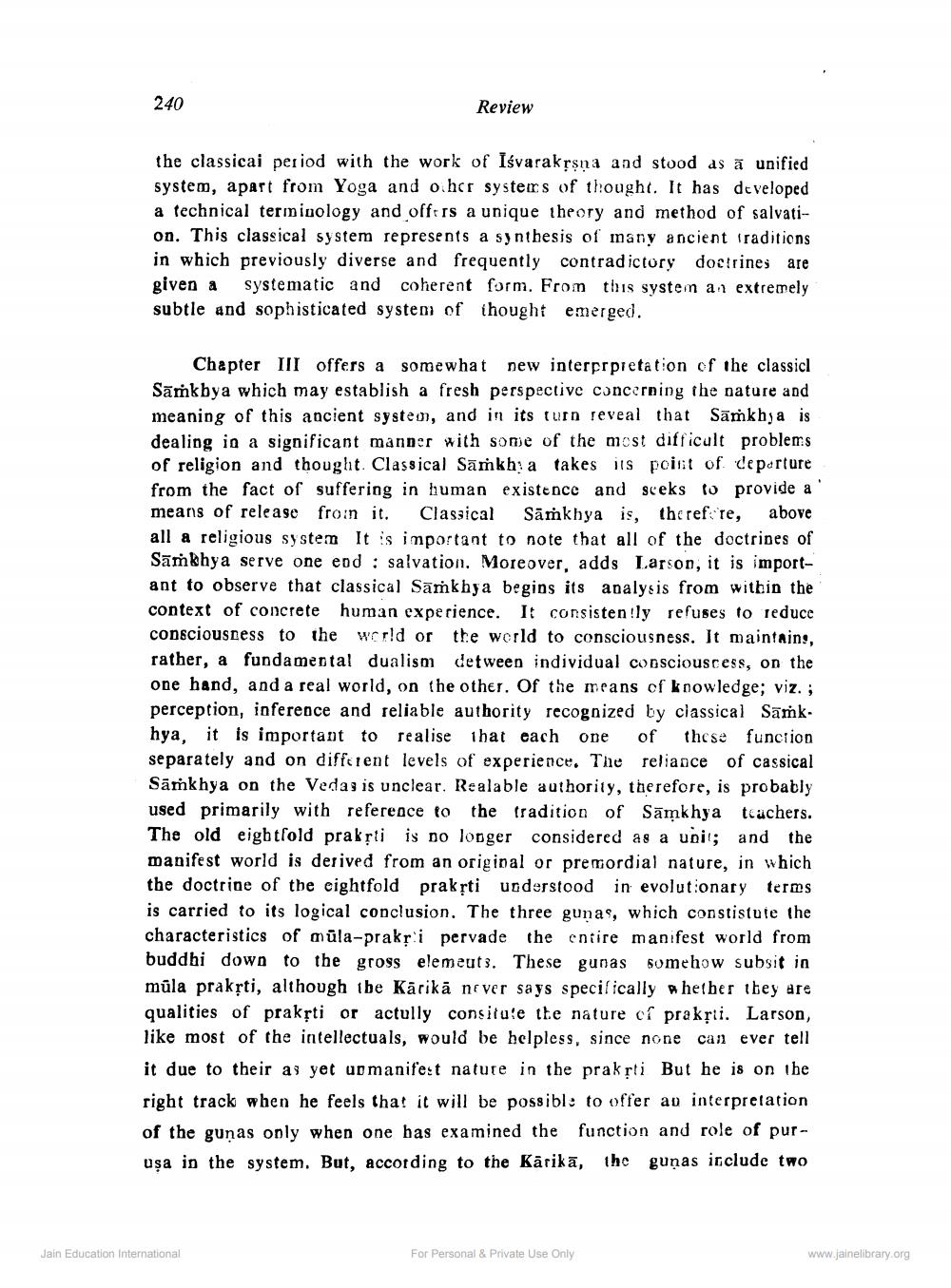________________
240
Review
the classical period with the work of Iśvarakṛṣṇa and stood as a unified system, apart from Yoga and other systems of thought. It has developed a technical terminology and offers a unique theory and method of salvation. This classical system represents a synthesis of many ancient traditions in which previously diverse and frequently contradictory doctrines are given a systematic and coherent form. From this system an extremely subtle and sophisticated system of thought emerged.
Chapter III offers a somewhat new interprpretation of the classicl Samkbya which may establish a fresh perspective concerning the nature and meaning of this ancient system, and in its turn reveal that Samkhya is dealing in a significant manner with some of the most difficult problems of religion and thought. Classical Samkh a takes its point of departure from the fact of suffering in human existence and seeks to provide a means of release from it. Classical Samkhya is, therefore, above all a religious system It is important to note that all of the doctrines of Samkhya serve one end salvation. Moreover, adds Larson, it is important to observe that classical Samkhya begins its analysis from within the context of concrete human experience. It consistently refuses to reduce consciousness to the world or the world to consciousness. It maintains, rather, a fundamental dualism detween individual consciousness, on the one hand, and a real world, on the other. Of the means of knowledge; viz. ; perception, inference and reliable authority recognized by classical Samkhya, it is important to realise that each one of these function separately and on different levels of experience. The reliance of cassical Sarkhya on the Vedas is unclear. Realable authority, therefore, is probably used primarily with reference to the tradition of Samkhya teachers. The old eightfold prakṛti is no longer considered as a unit; and the manifest world is derived from an original or premordial nature, in which the doctrine of the eightfold prakṛti understood in evolutionary terms is carried to its logical conclusion. The three gunas, which constistute the characteristics of mula-prakri pervade the entire manifest world from buddhi down to the gross elemeuts. These gunas somehow subsit in múla prakṛti, although the Kärikä never says specifically whether they are. qualities of prakṛti or actully consitute the nature of prakrti. Larson, like most of the intellectuals, would be helpless, since none can ever tell it due to their as yet urmanifest nature in the prakṛti But he is on the right track when he feels that it will be possible to offer au interpretation of the gunas only when one has examined the function and role of purusa in the system. But, according to the Karika, the gunas include two
Jain Education International
For Personal & Private Use Only
www.jainelibrary.org




